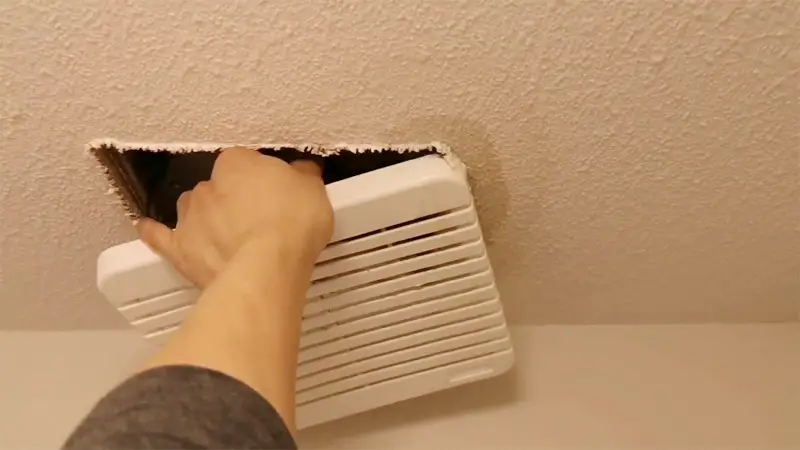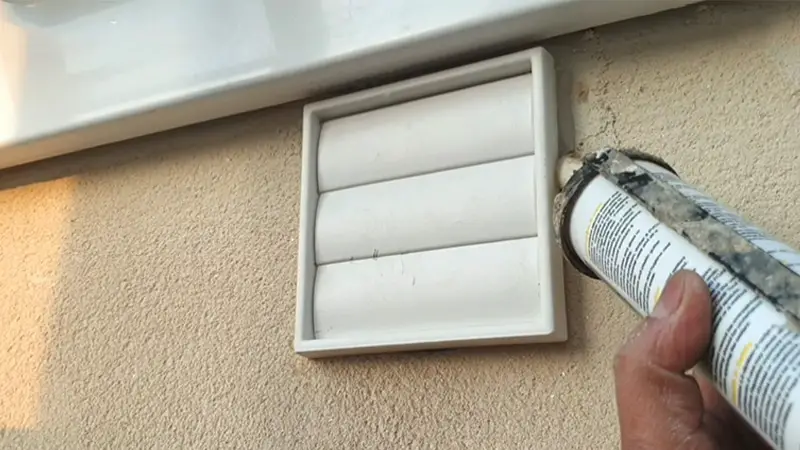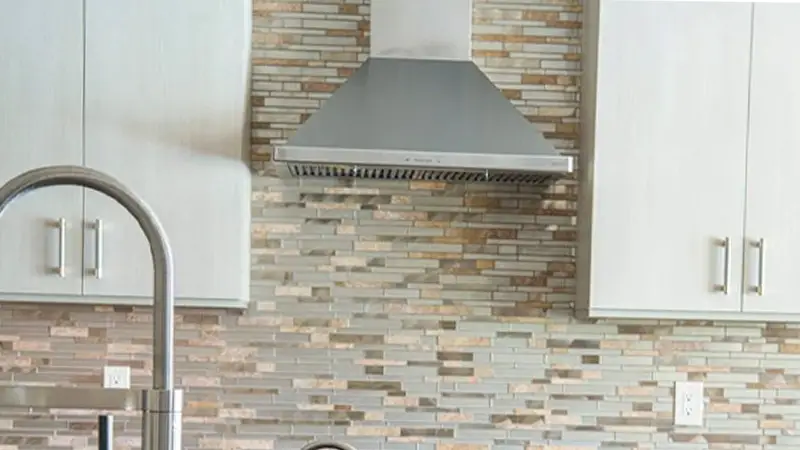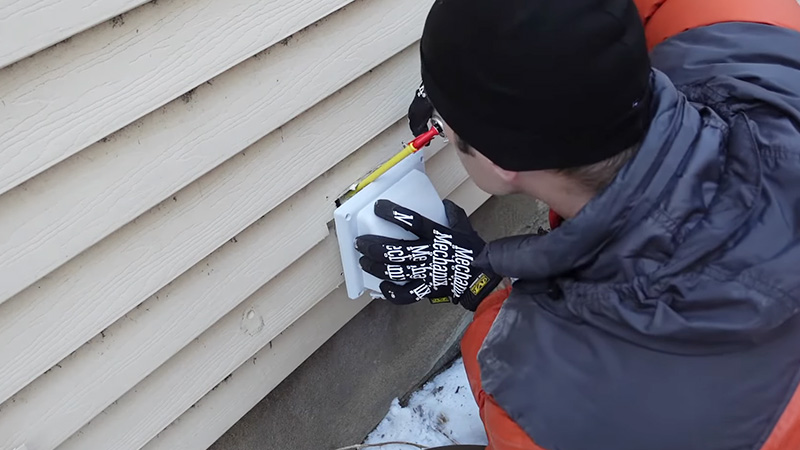Your home’s exhaust vents are an essential component of your HVAC system, helping to regulate the temperature and air quality inside your home.
However, if these vents are not properly sealed, they can allow hot or cold air to escape, leading to higher energy bills and a less comfortable living environment.
For spot ventilation, exhaust fans are typically installed in the ceilings of bathrooms and the range hoods of kitchens. To seal an exhaust fan, you can use aluminum duct tape. You can also apply several other methods for sealing a vent.
A thorough inspection of the ceiling drywall is usually necessary before installing bath exhaust fans and kitchen exhaust fans, as the holes in the ceiling drywall for the fan boxes or ducts are sometimes left unfilled.
Importance Of Air Sealing Bathroom and Kitchen Exhaust Fans

Air leaks can still occur even if cover ducts in range hoods are hidden in cabinets or decorative trim on exhaust fan boxes.
It is possible to leak conditioned air into unconditioned attics when the drywall is not sealed to the edges of the exhaust fan box or ducting. There is also a possibility of leaks in the boxes themselves.
Having differential pressures and temperatures between conditioned and unconditioned spaces promotes airflow.
These leaks may cause energy losses and allow warm, moisture-laden air into unconditioned attics, which might condense on cold surfaces, causing moisture issues.
For air barriers to work appropriately, they must be continuous. To do this, exterior walls, ceilings, and floors adjoining unconditioned spaces must be sealed off.
After installing drywall and exhaust fans, seal around them as soon as possible. Air leaks around exhaust fans and ducts should be addressed in the contract for the appropriate trade, depending on the particular project.
How To Air Seal The Bathroom Fan Housing?

- Cut a fan box opening in the ceiling that is no larger than needed. Ensure the drywall cuts are clean and even.
- Air seal the fan housing with caulk after installation from the room side before applying a trim.
- In case of gaps more significant than ¼inches, use canned spray foam applied carefully to fit over the gap.
- In the case of significant gaps, air-blocking material, such as rigid foam, which is cut to size to fit the gap and sealed in place with caulk or spray foam, can be installed from the attic side. Use fibrous insulation rather than cellulose; this does not seal the air.
- The holes in the fan housing should be sealed with caulk or metal tape.
- To seal the exterior fan duct vent, apply caulk or premade external wall gaskets to the outer wall. The exterior gaskets should be appropriately integrated into the house wrap.
How To Air Seal Holes Around The Kitchen Exhaust Duct?

Keep conditioned air from leaking into unconditioned spaces by sealing around kitchen and bathroom exhaust fans.
- Cut a hole no larger than one inch in diameter in the ceiling drywall using a saw.
- Caulk, sealing putty, or metal tape can be used to seal holes in the fan housing.
- Caulk or canned spray foam should be used to seal around the fan after it has been installed.
- Use metal tape or mastic to seal the exhaust duct to the fan box.
- Using caulk or a premade exterior wall gasket, seal the exterior fan duct vent.
- When the duct vents through the roof, install flashing that is properly integrated with the roof paper and roofing material.
- It is not a good idea to vent exhaust fans into the attic.
How Far Can You Vent A Range Hood?

If your range hood vent runs straight, it should not be longer than 30′ or 20′ with two elbows. Reducing duct run by 5′ every elbow is a good idea. A lot of resistance is created by elbows on the way outside, which slows the rate at which air moves.
Do I Need A Range Hood Damper?
A range hood damper prevents cold air, leaves, debris, and small animals from entering your ductwork.
A range hood vent opens when you use it and shuts when you don’t. The unit sits within the ductwork. Ensure it is installed as close to your home’s outside for maximum efficiency.
Final Words
Ensure openings around bathroom exhaust fan boxes and kitchen exhaust fan ducts are sealed with caulk or canned spray foam before cutting holes in the ceiling or walls.
By using a smoke pencil or by feeling with your hand, experienced technicians can also check for air leaks. To measure the effectiveness of the air barrier, the entire house must be considered.
Tests of the blower door, which are conducted during the whole-house energy performance assessment, can assist in detecting whether exhaust fan holes have been successfully sealed.







